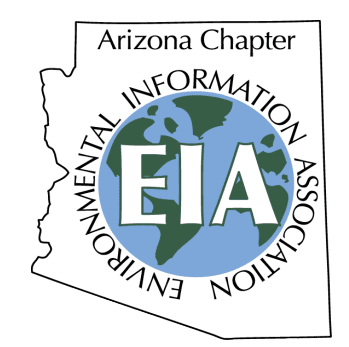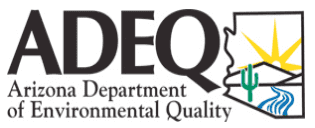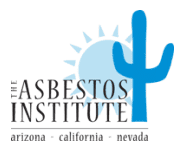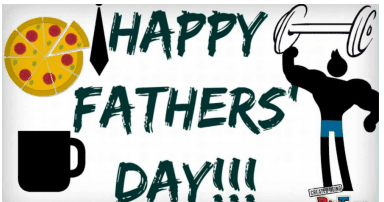1. Celebrate Fathers Day on Sunday, June 17th. This next Sunday is Father’s Day.

2. ADEQ Waste Programs Division Workshops & Webinars
Arizona Department of Environmental Quality’s Waste Programs Division invites interested parties from businesses, government and communities to participate in our free June 2018 workshops and webinars. Don’t miss these opportunities to learn about the latest requirements, get resources for best practices and earn professional development hours.

Tuesday, June 19 | 9:00 a.m. to 12:30 p.m.
Solid/Hazardous Waste and Pollution Prevention
Workshop | Kingman, AZ
Waste Programs Division
Solid Waste, Hazardous Waste, & Pollution Prevention Workshop
June 19th 8:30-9:00 am 9:00-10:30 am 10:30-12:00 pm 12:00-12:30 pm
Location:
Mohave County Public Works – Turquoise Room 3715 Sunshine Dr. Kingman, AZ
8:30 – 9:00 a.m. Check-in….Preregistration is required
9:00 – 10:30 a.m. An overview of solid waste regulations
10:30 – 12:00 p.m. An overview of Hazardous Waste
12:00 – 12:30 Pollution Prevention (P2) program Overview
Seating is limited. Registration required. Professional Development Hours (PDHs) are available for this workshop. You will be presented with a certificate confirming your attendance and PDHs earned on the day of the workshop.
If you have questions about this workshop, or need to cancel your registration, please contact us at [email protected]
Thursday, June 21 | 1:00 p.m. to 2:00 p.m.
E-Manifests: Information on EPA’s New Hazardous Waste Manifest System Webinar
Learn More and Register >
To view all upcoming solid and hazardous waste and pollution prevention events, visit azdeq.gov/sw-events
For questions of more information, please contact: [email protected]
3. Hazardous Waste Rulemaking – Time For The Public To Speak Up.

ADEQ will be conducting a hazardous waste rulemaking, as recently approved by the Governor’s Office, in which the agency plans to adopt EPA’s e-manifest and generator improvement rules, and other rules finalized by July 1, 2017. We will also include EPA’s recently finalized Definition of Solid Waste rule as a topic
We would like your feedback in two stakeholder conversations via WebEx. Based on discussions in the first meeting, we may add an in-person meeting location for the second date.
Please help us plan by providing your RSVP for the meeting you expect to attend, and whether you would prefer attending the latter meeting in-person.
June 14 (online or by phone) | Meeting Info >
- Register via WebEx
June 29 (online or by phone) | Meeting Info >
- Register via WebEx
- I would like to attend a Phoenix meeting
Feel free to forward this information to others who you think may be interested in hearing about ADEQ’s adoption of EPA’s e-manifest and hazardous waste generator improvement rules.
For questions regarding meeting and rulemaking content, please contact Terry Baer, ADEQ Hazardous Waste Unit Manager: [email protected]
For questions regarding meeting registration and technical issues, please contact: [email protected].

The Environmental Information Association
Arizona Chapter
In alliance with

AND

WILL BE PRESENTING A
FREE
ASBESTOS REGULATORY SEMINAR
Breakfast and Lunch included.
Come meet, share a meal and learn the basics from EIA
Board Members, ADEQ Inspectors and instructors from The
Asbestos Institute
Show Low, AZ June 14, 2018 8:00am – 3:30pm
Location: Show Low City Hall
Deuce of Clubs Meeting Room
180 N. 9th Street, Show Low., AZ 85901 (928) 532-4000
8:00 am Registration – Continental Breakfast / 8:30 am Seminar Start / 3:30 pm Seminar End
So that we can arrange for food, please register on-line at
www.eia-az.org or call (602) 864-6564

Dear Interested Party,
ADEQ held meetings on June 6 and 7 to gather stakeholder input on assuming the Clean Water Act Section 404 permit program (CWA 404). More than 200 stakeholders participated and provided valuable input.
The next step is to summarize the input received and start identifying topics and workgroups needed to develop the roadmap for the program.
We look forward to your continued involvement at our upcoming follow-up meetings:
Tuesday, June 26 | Phoenix | Meeting Info >
- I plan to attend the Phoenix meeting in person
- I plan to attend the Phoenix meeting by WebEx or conference call
Thursday, June 28 | Tucson | Meeting Info >
- I plan to attend the Tucson meeting in person
- I plan to attend the Tucson meeting by WebEx or conference call
Feel free to forward this information to others who you think may be interested in hearing about ADEQ’s assumption of the CWA 404 program | azdeq.gov/cwa-404.
6. Cleaning Products May Harm Female Worker’s Lungs As Much As Smoking A Pack A Day. Using chemical cleaning products could harm female workers’ lungs as much as smoking a pack of cigarettes every day for 10 to 20 years, according to a new study by a team of European researchers. Women who use sprays and other cleaning products at home as little as once a week may also harm their lungs, although the study did not quantify the impact by comparison with smoking.
The study looked not at lung cancer, but lung function – how well you’re moving air in and out of your lungs. Efficient lung function is necessary to pump oxygen into the blood and carbon monoxide out. Diminished lung function is a sign of lung disease or possible future development of the disease, which can be fatal.
The study, published in the American Journal of Respiratory and Critical Care Medicine, is thought to be the first to assess occupational or domestic cleaning product exposure as it relates to the decline of lung function.
According to the American Thoracic Society, lung function naturally declines slightly every year, starting in a person’s mid-20s. An accelerated dip in lung function could mean that a person’s health will decline sooner than expected. According to the Centers for Disease Control and Prevention, chronic obstructive pulmonary disease, or COPD, was the third leading cause of death in the U.S. in 2014. COPD encompasses a number of diseases, including chronic bronchitis and emphysema.
Because federal regulation of chemicals in cleaning products is poor, consumers should choose cleaning products carefully. Consult EWG’s Guide to Healthy Cleaning, which provides safety ratings for more than 2,500 products, to find cleaners that are safer for respiratory health. And follow these tips to reduce your exposure to harmful chemicals:
- Avoid spray cleaners. If you do use them, spray into a cloth rather than directly on a surface, which helps reduce your inhalation of tiny cleaning solution droplets.
- Cleaning products are often unnecessary. Regular cleaning with simple soap and water or baking soda and water will remove usual household grime and keep mold levels in check.
- Abrasive sponges and microfiber tools are also effective alternatives to harsh chemicals.
7. History of Father’s Day The nation’s first Father’s Day was celebrated on June 19, 1910, in the state of Washington. However, it was not until 1972–58 years after President Woodrow Wilson made Mother’s Day official–that the day honoring fathers became a nationwide holiday in the United States. Father’s Day 2018 occurs on Sunday, June 17.
On July 5, 1908, a West Virginia church sponsored the nation’s first event explicitly in honor of fathers, a Sunday sermon in memory of the 362 men who had died in the previous December’s explosions at the Fairmont Coal Company mines in Monongah, but it was a one-time commemoration and not an annual holiday.
The next year, a Spokane, Washington, woman named Sonora Smart Dodd, one of six children raised by a widower, tried to establish an official equivalent to Mother’s Day for male parents. She went to local churches, the YMCA, shopkeepers and government officials to drum up support for her idea, and she was successful: Washington State celebrated the nation’s first statewide Father’s Day on June 19, 1910.

In 1972, in the middle of a hard-fought presidential re-election campaign, Richard Nixon signed a proclamation making Father’s Day a federal holiday at last. Today, economists estimate that Americans spend more than $1 billion each year on Father’s Day gifts.
